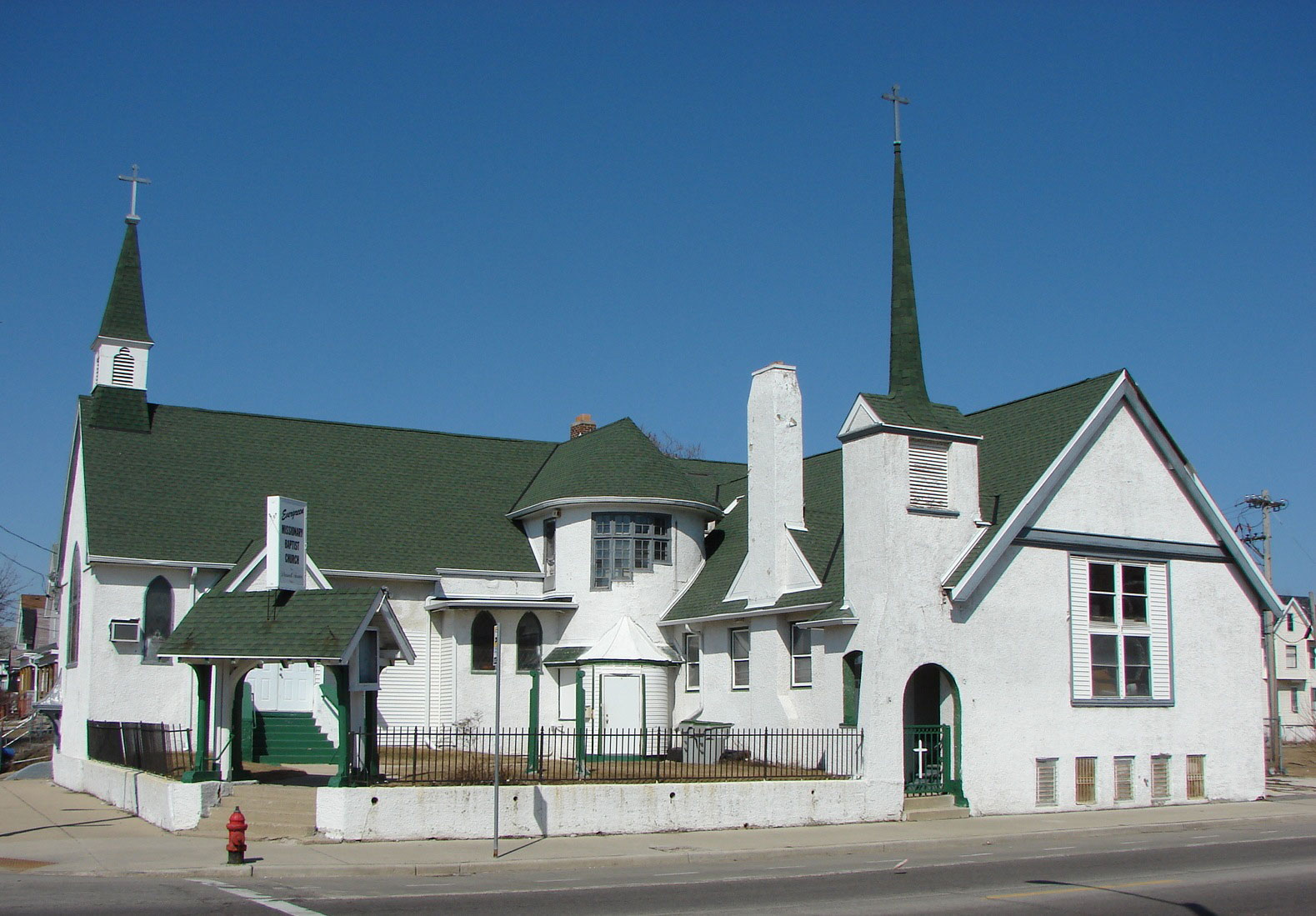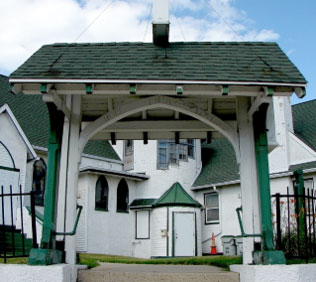56. St. George’s Episcopal, 1912
Now Evergreen Missionary Baptist
1138 West Center Street
Architect: Walter Memmler (1915 addition and renovation)

St. George’s Episcopal Church began as a mission of St. Paul’s Episcopal on the East Side. Founded in 1892, the mission included a chapel and Sunday school and offered classes of various kinds to both children and adults. The mission relocated from East Clybourn Street to 12th and Center Streets in 1912. The Episcopal diocese elevated the mission to a separate parish in the early 1940s, with the name changing from St. Paul’s Mission House to St. George’s Episcopal Church.
As part of the 1912 relocation, the mission acquired an older Episcopal church at 18th and Wright Streets and had it moved eight blocks to the property at 12th and Center. (Although it is a rare occurrence today, moving entire buildings was much more common in the late nineteenth and early twentieth centuries.) The mission expanded the relocated building, which now forms the church wing along the northern boundary of the property.
The lych gate at the southwest corner of the property was also erected at the time of the church relocation. (A lych gate is a covered gateway to a churchyard, an architectural element seen at some English churches of the Middle Ages and later.) The lych gate built for St. George’s Episcopal is the only example in Milwaukee.
The mission added a guild hall in 1915, in a new wing perpendicular to the church wing, thus giving the building its present “L” shape. The new wing provided an assembly room on the main floor and recreational facilities in the basement, including a bowling alley and billiard room. Milwaukee architect Walter Memmler designed the addition, along with some alterations to the older building. Memmler’s design visually unified the two wings by covering both in stucco, removing some of the Gothic Revival details from the church, and adding the round entrance and stair tower at the inner hinge point of the two wings.
The result is a quaint and very English looking church, showing the influence of the Arts and Crafts movement. The architecture of the Arts and Crafts movement, particularly some of the English work of the 1890s and early twentieth century, is an architecture of simplification. The exterior of St. George’s has no applied ornament, stringcourses, or other fussy details. Instead, the emphasis is on the building’s overall form and the assemblage of smaller volumes that comprise the overall form. The style is unique among Milwaukee’s religious buildings.
Evergreen Missionary Baptist Church, the building’s current occupant, was founded in the early 1950s. This congregation acquired the property in the early 1980s, and is therefore now in its fourth decade at this location.
Sources:
Mary Ellen Young Papers, Milwaukee County Historical Society Archive.
Memmler, Walter, architect. Drawings for guild hall addition to St. George’s Episcopal Church, undated. Wisconsin Architectural Archive, Milwaukee Central Library, drawing set 53-58.
Troeger, Agnes Boyd. History of Saint Paul’s. St. Paul’s Episcopal Church, 1984.
Wagner, Rev. Harold E. The Episcopal Church in Wisconsin, 1847-1947. Episcopal Diocese of Milwaukee, 1947.

